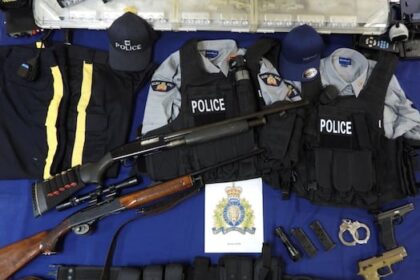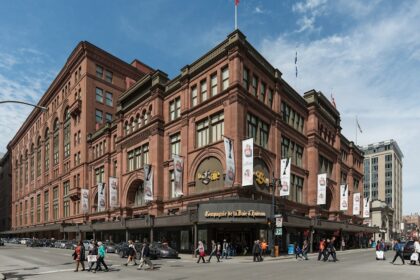British ColumbiaBoth were number one seeds in their respective quadrants, showing a lack of major upsets — and perhaps a focused group of voters who took their task seriously. The animal and nature sectional winners face off for a berth in the championship matchJustin McElroy · CBC News · Posted: Aug 11, 2025 9:00 AM EDT | Last Updated: 7 hours agoIt’s animal versus nature in the Search for B.C.’s Best Symbol. Which one will make it to the championship final? (CBC News)And then there were four. After four weeks and more than 350,000 votes, the Search for B.C.’s Best Symbol has left us with four winners for the four sections of the competition — Orca (for animals), Western Red Cedar (for nature), Totem Poles (coastal symbols), and the B.C. Flag (provincial symbols) — that will face off this week to determine a champion. All were number one seeds in their respective quadrants, showing a lack of major upsets — and perhaps a focused group of voters who took their task seriously. “We’re looking for British Columbia’s best symbol, right?” said Michael Dawson, a historian and co-author of the book Symbols of Canada. “We’re not going for the most controversial, we’re not going for the most exciting. We’re maybe not even going for a symbol that deserves more recognition. So maybe that explains why people are gravitating to the more recognizable.”At the same time, that predictability has resulted in four semifinalists that are iconic symbols of this province.But which will move on in today’s first semifinal: the Orca or the Western Red Cedar?Indigenous appreciation for centuriesWhile both are number one seeds, the favourite would seem to be the orca: it won most of its matchups in blowouts, has been turned into mascots for the Vancouver Canucks and the 1994 Victoria Commonwealth Games, and in some quarters, has seen a remarkable change in attitudes towards it over the last 60 years. “I’m rooting for the orca here, ” said Ginger Gosnell-Myers, an Indigenous fellow with the SFU Morris J Wosk Centre for Dialogue, who noted the deep relationship Indigenous people had with the orca, red cedar and totem poles for many centuries.”I have a story from Chief Ian Campbell from the Squamish Nation. And he talked about how orcas in the Salish Sea used to birth their babies just outside of the Ironworkers Bridge. And so now, when we see the orcas struggle to have their babies, we should know it’s because we’ve taken away the place where they felt safe enough to have their babies.”The search for B.C.’s Best Symbol enters the final stretchThe race tightens in our search for B.C.’s Best Symbol. Our panel recaps another week of voting and looks ahead to the finals.At the same time, Red Cedar has a strong history along the coast as well.”For 5,000 years, red cedar has been widespread … and centred in Indigenous culture, from everything from clothing to tools, to totems, to canoes,” said Meghan Cursons, executive director of the Cumberland Community Forest Society. “The cedar is mighty, and its history goes back much further than traditional ways that we protect or describe or put behind glass things that are important in our culture.”It is a fascinating matchup of land versus sea, flora versus fauna, static versus active, multi-use versus protected. However, it’s up to you to decide which one moves on to the championship final. ABOUT THE AUTHORJustin is the Municipal Affairs Reporter for CBC Vancouver, covering local political stories throughout British Columbia.
Search for B.C.’s Best Symbol: Semifinal 1 Orca vs. Western Red Cedar











